
Support Team
Feedback:
support@nextpcb.comFor those in the electronics industry, it's well known that chip packaging is akin to dressing the intricate "electronic brain" in a protective outer layer. This "coat" not only safeguards the delicate silicon chip but also plays a critical role in enabling communication with the outside world. Today, let's explore the eight most common chip packaging technologies on the market and delve into the ingenious designs within these compact forms.
Dual In-line Package (DIP) has been a mainstay in the electronics world since its inception in 1965. This black, rectangular package with metal pins on both sides was the standard for 1980s electronics. While it has gradually been replaced by Surface-Mounted Device (SMD) packages, DIP still holds its ground in certain applications.
DIP packaging is simple and widely used for small to medium-scale integrated circuits (ICs). CPUs with DIP packaging typically have two rows of pins (usually no more than 100), making them easy to insert into DIP-compatible sockets or directly solder onto a circuit board. Common applications include standard logic ICs, memory LSI, and microelectronic circuits.
Despite the demand for smaller electronics, DIP's larger pin spacing (typically 2.54mm) means it remains bulky but is still prevalent in industrial control devices, experimental circuit boards, and even vintage equipment. Recently, while repairing an old amplifier, I discovered DIP packaging in its power module. Though it is gradually being overshadowed by more compact and efficient packaging forms, DIP remains a key part of the electronics industry.

image from wikipedia Dual_in-line_package
1. Suitable for through-hole soldering on PCBs, making installation easy.
2. Larger chip-to-package area ratio, which means a larger physical size.
3. Used in early Intel CPUs like the 8088, and early memory chips such as the 4004, 8008, and 8086.
The Shrink Dual In-line Package (SDIP), also known as Narrow Pitch Dual In-line Package or Compressed Dual In-line Package, is a type of through-hole package. SDIP is a derivative of the DIP package, having the same shape as the DIP but with a smaller lead pitch (1.778mm) compared to DIP (2.54mm). The number of leads ranges from 14 to 90, and the materials used can be either ceramic or plastic.
When talking about the most popular packaging technologies today, QFN (Quad Flat No-lead) packaging definitely ranks among the top three. This leadless square package connects through pads on the bottom, almost like putting an invisible armor on the chip. The QFN package has a large exposed pad at the center of the bottom, which effectively dissipates heat, while the surrounding pads are for electrical connections. When disassembling a flagship smartphone from a certain brand, it was found that the main control chip uses a 0.4mm pitch QFN-48 package, with its secret weapon being the central exposed pad, which not only allows for fast heat dissipation but also enhances the structural strength of the package.
Unlike traditional SOIC and TSOP packages, QFN does not have gull-wing leads. The conductive path between the internal pins and pads is short, greatly reducing the self-inductance and the resistance of the internal wiring, thereby offering excellent electrical performance. In addition, QFN further improves thermal performance through the exposed lead frame pads on the bottom, which are connected to heat dissipation pads and vias on the PCB. This effectively spreads the excess heat, helping the chip maintain a stable operating temperature.
However, despite QFN's excellent electrical performance and heat dissipation capabilities, beginners need to be cautious when soldering. Particularly with the surrounding pads, there is a tendency for cold solder joints, and precise control of the reflow soldering temperature profile is required to ensure soldering quality.
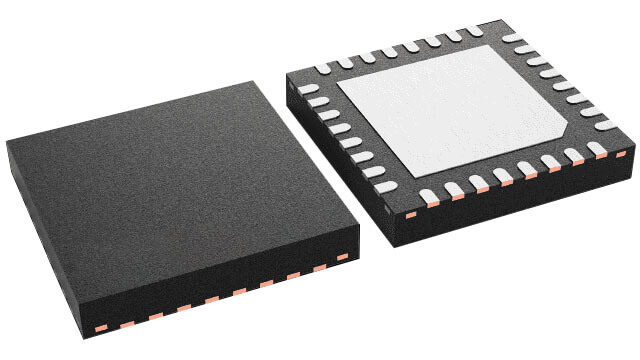
The main advantage of QFN packaging is its outstanding electrical and thermal performance. Thanks to the large heat dissipation pads on the bottom of the package, heat can be effectively transferred to the PCB, improving overall heat dissipation efficiency. Compared to traditional SOIC and TSOP packages, QFN offers shorter conductive paths and significantly improved electrical efficiency. QFN also has a compact size and light weight, reducing its dimensions by 62% compared to Thin Shrink Small Outline Package (TSSOP). Moreover, its thermal performance is 55% better than TSSOP, and its electrical performance (inductance and capacitance) has improved by 60% and 30%, respectively, excelling in high-density assembly boards.
However, QFN packaging also has some disadvantages. Because its solder points are located at the bottom of the package, any soldering defects (such as bridging, open circuits, or solder ball defects) can make the repair process more complicated, requiring the component to be removed for repair. This increases the difficulty of repairs. Especially in high-density assembly boards, due to the small and compact nature of the QFN package, repairs become even more challenging. Nevertheless, QFN packaging has been widely used in portable electronic devices, particularly in consumer electronics such as laptops, digital cameras, mobile phones, and more. As its performance continues to improve, QFN packaging is increasingly being applied in wearable devices, instrumentation, and small robots.
DFN (Dual Flat No-lead) packaging is a leadless, flat packaging form that is typically square or rectangular in shape. Similar to QFN packaging, DFN features large exposed pads on the bottom for heat dissipation, surrounded by electrical connection pads. Since it lacks traditional leads, DFN achieves electrical connections through direct soldering of the pads. This structure not only shortens the conductive path, reducing inductance and trace resistance but also improves electrical performance and signal integrity.
The most prominent feature of DFN packaging is its compact size, with the smallest dimensions reaching as small as 2x2mm, making it even slimmer than QFN. Therefore, when circuit board space is limited, DFN packaging is ideal for applications in portable electronic products such as smartwatches and Bluetooth earphones. Some blood glucose meter projects also use DFN-8 packaged pressure sensors, further demonstrating its wide application in small devices.
Although DFN packaging excels in electrical performance and heat dissipation, it has specific requirements for PCB design. To ensure proper heat dissipation, it is necessary to leave sufficient thermal vias in the design to prevent overheating from affecting performance. Overall, DFN packaging, with its compact size and excellent thermal performance, has become the ideal choice for high-density, space-constrained applications.

PLCC (Plastic Leaded Chip Carrier) packaging is a traditional integrated circuit packaging form, typically square or rectangular, smaller than DIP packaging, and offers higher reliability. It uses surface-mount technology (SMT) and features gull-wing leads extending from all four sides, which enables efficient installation and wiring on the PCB. PLCC packaging is widely used in various electronic devices such as computers, communication equipment, and consumer electronics, particularly in applications that require high mechanical strength and electrical performance.
Although it was once thought that PLCC would be replaced by more advanced packaging technologies, it has found new life in the LED display industry. Its unique gull-wing lead design effectively alleviates thermal stress, making it particularly suitable for applications that involve frequent temperature changes. An industrial display manufacturer has stated that they continue to use PLCC packaging for their LED driver chips because the failure rate is 30% lower than with QFN packaging.
However, when using PLCC packaging, it's important to note that socket connections can suffer from poor contact, making direct soldering a more reliable option. Despite this, PLCC packaging still maintains a strong position in certain fields due to its compact size, excellent thermal management capabilities, and good mechanical strength, representing a comeback for the "veteran" technology in the electronics industry.
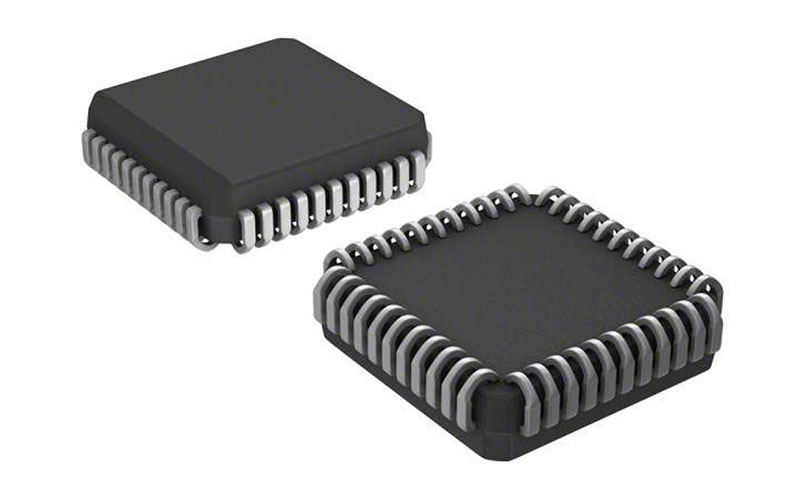
Advantages:
Disadvantages:
For further details on PLCC packaging, please refer to "PLCC Packages: A Comprehensive Guide Is Here"
From the standard SOP (Small Outline Package) to the TSSOP (Thin Shrink Small Outline Package), this family perfectly demonstrates the concept of "small size, big energy." A recent IoT terminal design utilized an SSOP-20 packaged RF chip, which integrates complete wireless functionality within an area of 10x5.3mm. Newcomers should pay attention to the differences between various derivative models: TSOP is commonly used for memory chips, while VSOP is often found in high-frequency circuits. It is important to carefully check the packaging codes in the datasheet when selecting.
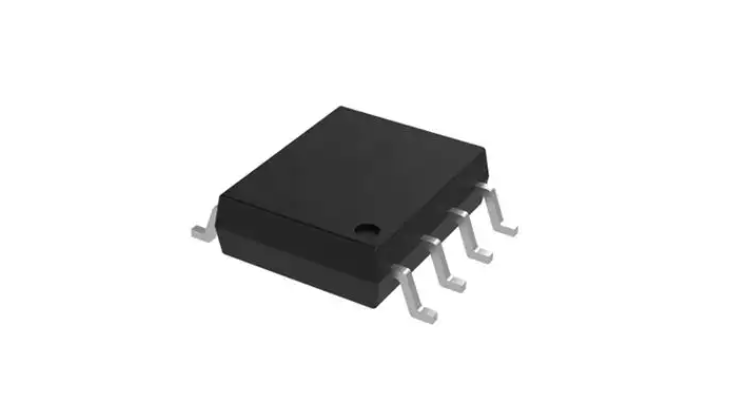
LQFP (Low-profile Quad Flat Package) is an integrated circuit packaging form that utilizes surface-mount technology (SMT). Its distinctive feature is the flat leads on all four sides, with the leads extending from the package in a “gull-wing” shape, which facilitates soldering and inspection. LQFP packages typically have a thickness of 1.4mm or thinner, making them ideal for space-constrained applications. Common lead pitches are 0.5mm, 0.65mm, or 0.8mm, and the number of pins ranges from 32 to 256, with applications commonly found in the range of 64 to 144 pins.
LQFP packaging is widely used in microcontrollers (MCUs), communication chips, and consumer electronics, particularly in the mid-range chip market that requires numerous I/O ports. LQFP has always held a prominent position in this segment. An engineer from an MCU manufacturer revealed that adopting LQFP-100 packaging can effectively reduce production costs by up to 15%. However, while the thin profile offers the advantage of compact size, it also requires high precision in placement, and special attention must be paid to PCB deformation during production to ensure precise installation of the package.
Despite its low cost and broad applicability, LQFP packaging has relatively poor heat dissipation performance. In high-power applications, additional cooling measures may be necessary. Additionally, in practice, the corner solder pads of LQFP chips are most susceptible to cold solder joints. Therefore, special attention must be paid during production to inspect and ensure the quality of soldering.
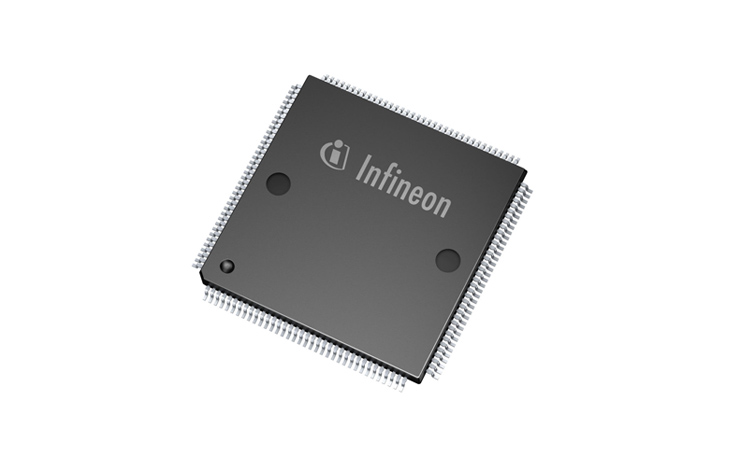
Image sourcing: infineon
When the number of pins exceeds 300, BGA (Ball Grid Array) packaging becomes the only choice. BGA packaging is a surface-mount technology that connects the chip to the PCB using solder balls for signal transmission. Compared to traditional QFP (Quad Flat Package), BGA packaging has higher I/O (input/output) density and experiences less stress caused by thermal expansion coefficient differences, which improves the stability and reliability of the device.
For example, in a gaming graphics card project, the GPU chip uses a 1156-ball BGA package, and its soldering yield directly determines the success or failure of the high-end product. For small batch production in the R&D stage, it is recommended to use reworkable BGA packages with ball placement to allow for repairs when issues arise. However, it is important to note that BGA rework must be done using X-ray inspection, as it is difficult to detect fine shorts between solder balls with the naked eye. For complex high-pin-count packages, X-ray inspection is key to ensuring soldering quality.
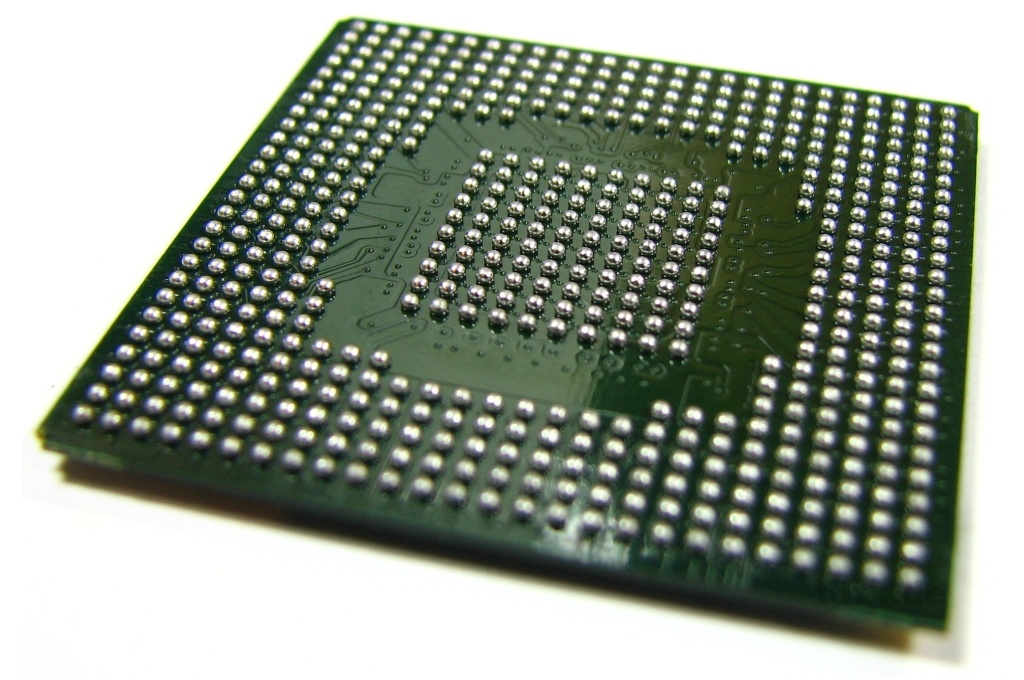
BGA (Ball Grid Array) packaging technology has significant advantages:
High Yield: Compared to traditional narrow-pitch QFP packages, BGA significantly reduces the solder joint failure rate, greatly improving yield.
Superior Electrical Performance: Due to the shorter leads in BGA, electrical performance is greatly enhanced, providing more stable signal transmission and reducing the impact of inductance and wiring resistance.
High Pin Density: BGA packaging allows for more pin connections within a smaller chip size, increasing the number and density of leads.
Sturdy and Less Prone to Deformation: The solder ball connections not only increase reliability but also make the package more stable, making it less prone to deformation or soldering issues.
Improved Heat Dissipation: BGA packaging improves thermal performance through exposed solder pads at the bottom, helping the chip dissipate heat effectively, ensuring efficient operation.
Suitable for High-Density Packaging: BGA is particularly well-suited for multi-chip module (MCM) packaging, achieving higher density and performance integration.
Although BGA packaging technology demonstrates significant advantages such as high yield, superior electrical performance, high pin density, reliability, good heat dissipation, and suitability for high-density packaging, it is not without challenges.
The following are some potential drawbacks of BGA packaging:
Non-Ductile Connections: BGA soldering uses solder balls that lack ductility, which can cause solder joints to break under thermal expansion or mechanical stress. However, this issue can be effectively addressed by using bottom-fill materials or ductile coatings, improving the reliability of the package.
Inspection Difficulties: Since BGA solder joints are located at the bottom of the package, traditional visual inspection cannot easily detect soldering defects. Therefore, X-ray or other advanced equipment is usually required for inspection. Once a problem is detected, the rework process is relatively complex and costly.
Challenges during Development Stage: BGA soldering is more complex and requires specialized equipment, and manual soldering has lower reliability. Therefore, during the early development stage, companies often opt for socket packages as an alternative, adding to both cost and complexity.
BGA packaging comes in several different types, each with its own advantages and suitable applications:
PBGA (Plastic Ball Grid Array): This is the most common BGA packaging form, made with plastic materials and plastic processing techniques. Its substrate is typically PCB materials (such as BT resin/glass laminates). The bare chip is bonded and connected to the top surface of the substrate using wire bonding and WB techniques, followed by encapsulation using injection molding (epoxy resin mixture). PBGA is cost-effective but sensitive to moisture and susceptible to the "Popcorn effect" (moisture-related issues).
CBGA (Ceramic Ball Grid Array): This is an older BGA packaging form that uses multilayer ceramic substrates. The bare chip is mounted on the top surface of a ceramic multilayer substrate, with a metal cover welded using sealing solder to protect the chip, leads, and pads. CBGA offers good electrical insulation properties, excellent heat dissipation, and high reliability, but it is more expensive and has poor thermal compatibility with ceramic substrates.
FCBGA (Flip Chip Ball Grid Array): This packaging form is mainly used for graphics acceleration chips. FCBGA resolves electromagnetic interference and electromagnetic compatibility issues by directly exposing the backside of the chip to the air for better heat dissipation and increased I/O density, while reducing package size. However, its process difficulty is higher, and it comes at a higher cost.
TBGA (Tape Ball Grid Array): This is a newer BGA packaging form that uses low-melting-point solder alloys and flexible carrier tapes. TBGA's advantages include utilizing the self-alignment of solder balls, excellent thermal compatibility with PCB boards due to its flexible carrier tape, and being an economical packaging solution. However, it is sensitive to moisture, and the multi-level material combinations may negatively impact reliability.
Each type of BGA packaging has different strengths and is suited for specific application scenarios. Designers can choose the appropriate package type based on their specific needs to meet the chip's performance, cost, and reliability requirements.
For further details on BGA packaging, please refer to "7 Types of BGA (Ball Grid Array) Packages"
Wafer-Level Chip Scale Packaging (WLCSP) is a disruptive technology in the semiconductor packaging field that is rapidly transforming the industry landscape. WLCSP technology eliminates the steps of cutting and testing associated with traditional packaging methods by performing packaging and testing directly on the entire wafer, resulting in a package size almost identical to the original chip. This innovation has led to an extreme miniaturization effect. For example, the latest 5G module from a leading mobile chip manufacturer, after adopting WLCSP packaging, has reduced its size by 60%, and the thickness of the chip can be as thin as 0.6mm. For applications with strict space requirements, such as smartphones and wearable devices, WLCSP undoubtedly provides an ideal solution.
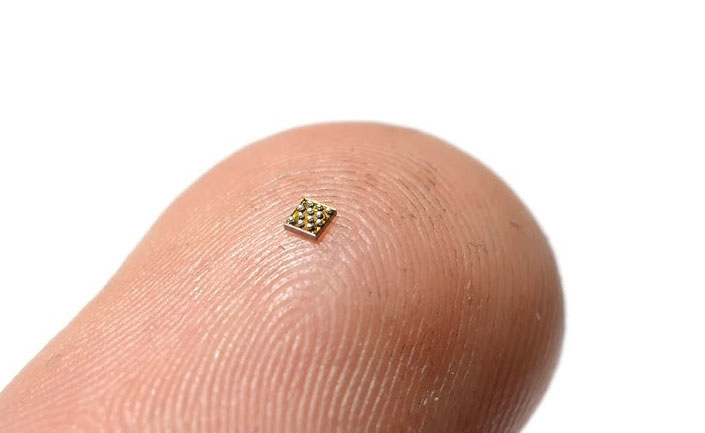
Image sourcing: internet
Minimal Size: The package volume is approximately equal to the bare chip size, making it suitable for space-sensitive applications such as smartphones and wearable devices.
Optimized Electrical Performance: The short signal paths reduce inductance and resistance, enhancing high-frequency performance, making it suitable for RF (5G/Wi-Fi) and high-speed chips.
Cost Efficiency: Wafer-level batch processing reduces the cost per chip, especially in large-scale production.
Simplified Supply Chain: The integration of packaging and manufacturing processes reduces intermediate steps.
Thermal Limitations: The small size leads to insufficient heat dissipation area, requiring additional thermal design for high-power chips.
Lower Mechanical Strength: The lack of traditional packaging protection may require bottom-filling adhesives to enhance impact and thermal cycling resistance.
Limited I/O Count: The solder ball layout is constrained by the chip's area, making it suitable for chips with medium-to-low pin counts.
WLCSP stands out for its extreme miniaturization and high performance. Despite challenges in heat dissipation and mechanical strength, its advantages in mobile communication, IoT, and other fields make it an important choice for modern semiconductor packaging. With ongoing advancements in 3D integration, advanced materials, and other technologies, the application scope of WLCSP is expected to expand further.
Pin Grid Array (PGA) packaging is an integrated circuit (IC) packaging technology commonly used for microprocessor packaging. In PGA packaging, the integrated circuit (IC) is placed inside a ceramic package, and the bottom of the ceramic is designed with an array of pins arranged in a square pattern. These pins can be inserted or soldered into corresponding sockets on the circuit board. This unique pin connection method makes PGA packaging particularly suitable for applications that require frequent insertion and removal.
The key feature of PGA packaging lies in the design of its pins. Each pin is vertical to the circuit board (PCB), providing stable electrical connections and high pin density, making it ideal for processors requiring a large number of I/O connections. However, this design also introduces some challenges. Since the pins in PGA packaging are relatively long and prone to damage, careful handling is required during installation or removal. If the heatsink is installed too tightly, it may cause the CPU to come off with the heatsink or damage the pins. To avoid this risk, PGA packaging typically uses a side clamp method to secure the components.
Despite some drawbacks, such as less stability during installation—especially in AMD’s socket design, where the CPU may come off with the heatsink during disassembly—PGA still demonstrates certain advantages. For instance, because the pins in PGA packaging are vertically designed, if a pin bends, it is relatively easy to restore manually. In contrast, LGA packaging features more complex pin designs that are much harder to fix, making recovery largely dependent on luck.
PGA packaging is widely used in AMD desktop CPUs and other products. It offers high packaging strength and durability, making it suitable for frequent insertion, removal, and overclocking operations. Compared to other packaging types, PGA packaging is better able to withstand environments with frequent hardware adjustments, reducing the risk of hardware failure caused by packaging issues.
In conclusion, PGA packaging, as a classic connection method, still holds an important place in high-density and high-performance applications. While its usage has decreased with the rise of LGA packaging, it continues to play a significant role in certain specific areas.
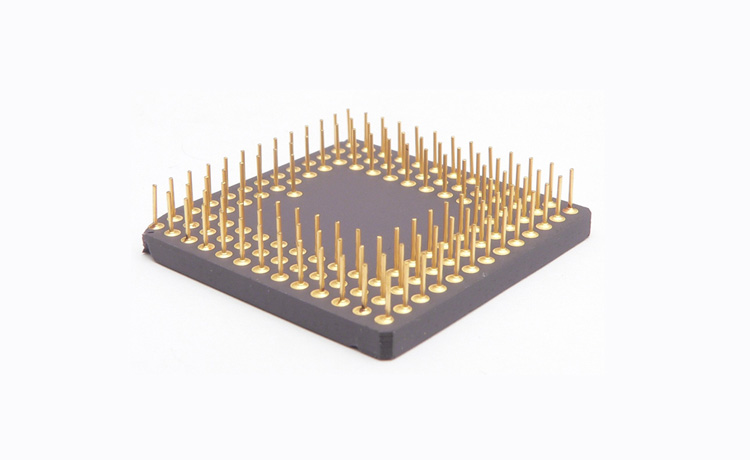
image from wikipedia Pin Grid Array Packaging
PGA packaging is suitable for situations that require frequent insertion and removal, such as microprocessors, image processors, and FPGAs, among other high-performance integrated circuits.
The application fields of PGA packaging are very extensive, mainly including the following aspects:
Communication Field: PGA chips have advantages in high-speed transmission and low power consumption in communication devices, making them suitable for fiber optic communication, mobile communication, and other fields. Their high performance and reliability can meet the growing communication needs.
Artificial Intelligence Field: PGA chips play an important role in the computational acceleration of artificial intelligence algorithms. Their high density and performance make them an ideal choice for machine learning, deep learning, and other areas.
Data Centers: PGA chips play a crucial role in servers, storage, and other devices in data centers. Their high performance and density enable them to handle large-scale data, meeting the needs of data centers.
Military and Aerospace Field: The reliability of PGA chips makes them an ideal choice for military and aerospace applications. Their high integration and low power consumption characteristics allow them to adapt to various complex environments.
Consumer Electronics: PGA packaging is widely used in computers, network communications, consumer electronics, and smart mobile terminals. Their high performance and reliability have led to extensive applications in these fields.
Industrial Control: PGA packaging is suitable for industrial automation control and other fields, providing stable electrical connections and efficient performance.
High Pin Count: PGA packaging typically features hundreds to thousands of pins, making it suitable for high-density connection requirements. Due to the unique design of the pins, this packaging provides a large number of electrical connections, meeting the needs of high-speed transmission and low-power applications.
High Performance: It uses advanced multi-layer packaging technology, allowing it to accommodate more functions and circuits, making it suitable for high-speed data transmission and low-power applications. Its high integration enables more core units to be integrated into a small package, adapting to more complex design requirements.
Ease of Maintenance: The pin design of PGA packaging makes the chip easier to replace and maintain, particularly in applications where frequent insertion and removal are needed. The pins are arranged in a matrix pattern at the bottom of the chip, making it easy to insert into the corresponding socket on the circuit board, facilitating quick installation and removal.
Good Thermal Conductivity: The pins of PGA packaging provide a larger surface area, which helps dissipate heat more effectively, making it suitable for high-power applications. Its stable packaging structure ensures that it can withstand harsh environmental conditions, providing reliable long-term performance.
Reliability: The PGA packaging has a stable structure with reliable solder ball connections, enabling it to withstand complex and harsh environments, ensuring long-term stable operation of the system.
Overall, PGA packaging excels in high density, high performance, good heat dissipation, and reliability, making it an ideal packaging choice for many high-end electronic applications.
Compared to LGA (Land Grid Array): LGA has pins located on the socket, whereas PGA has pins located on the chip. LGA has a smaller footprint but requires more complex replacement operations.
Compared to BGA (Ball Grid Array): BGA uses solder balls for connections, which results in a smaller package but is difficult to repair. PGA, on the other hand, is more suitable for scenarios that require frequent replacements.
Although PGA packaging is gradually being replaced by BGA and LGA, it still holds significant importance in certain fields due to its good maintainability and flexibility.
The evolution of packaging technology is like a miniature history of electronic development: from DIP to WLCSP, packaging volume has decreased by 95%, while performance has increased by thousands of times. Choosing a packaging solution should not be about blindly chasing trends, but rather about comprehensively considering factors such as cost, process, and reliability. For example, QFN is sufficient for smart home products, while aerospace equipment may still require the proven PLCC packaging. When designing circuits next time, it might be helpful to communicate more with packaging engineers; you may find unexpected optimization solutions. After all, a good package is not just a protective shell but also a performance booster.
Still, need help? Contact Us: support@nextpcb.com
Need a PCB or PCBA quote? Quote now
|
Dimensions: (mm) |
|
|
Quantity: (pcs) |
|
|
Layers: 2 |
Thickness: 1.6 mm |
|
|
|